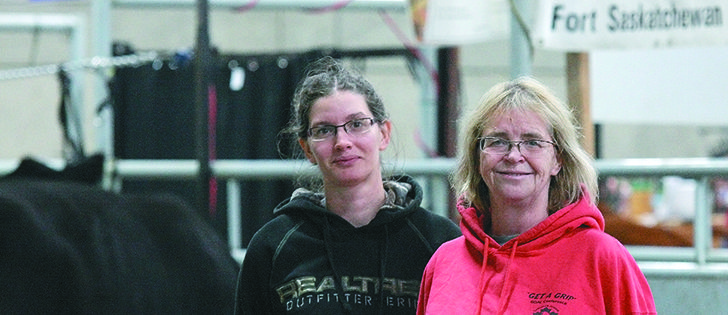Marking 40th | New cattle breeds, better equipment and technology keep cattle showing tradition strong
“I was here when Angus weren’t cool,” said Gabert of Crooked Creek Angus near Fort Saskatchewan, Alta.
Gabert and her husband, Rick, weren’t in the nice show barns when they started showing cattle. Instead, they were in the old dark and drafty Edmonton Gardens. The cattle were tied around the outside wall and the cattle shown in the middle of the barn.
“Clipping and grooming wasn’t as perfect as it is now,” said Gabert, as she showed the tack box full of brushes, sprays and blow dryers she needs to get her cattle in show shape.
Read Also

Manitoba extends Crown land rent freeze
Manitoba government links the continued rental rate freeze on grazing and forage leases to economic and environmental challenges facing the industry
Farmfair has been a good venue for the family to show off their cattle and encourage their children to join the business.
“We stuck with it because we thought it was good for the kids,” said Gabert. She spent the summer going to small fairs and cattle shows with their children and cattle.
“We do this as a family function. We do this thing with the kids so they don’t need all the extra stuff.”
Gabert said a lot of customers come by their stall to check out their string of show cattle.
The ability to improve their herd through artificial insemination is one of the biggest improvements over the past 40 years.
“It’s improved our herd phenomenally,” she said.
Howard Schneider of Northline Angus can’t imagine missing Farmfair. The Angus breeder from Ardrossan, Alta., has attended for 40 years and said Farmfair is where a lot of sales happen.
Most purebred livestock sales 40 years ago were to neighbours and local people, he added. Now, a steady stream of international buyers comes through the barns.
“We’ve done a lot of business through here,” said Schneider. Before you went for the prize money. There is no prize money, really, now. You go to advertise and make contacts.”
Semen and embryo transplants have allowed international buyers to walk through the barns and select the cattle they want in their herd, said Schneider.
“It’s nice to see a calf from a cow and a bull from your herd on a farm across the world.”
Lorne Bodell of Golden Harvest Ranches near Stony Plain, Alta., has shown Limousin cattle since Farmfair began in 1974. The show coincided with the growing interest in European cattle, and it was a way to promote their cattle.
“It’s been a very good marketing tool for our business. It’s our local show,” he said.
“If you are in the purebred cattle business in Alberta, this is the show you need to attend. We make a lot of sales and create a lot of business because we’re here at Farmfair.”
Limousin shows in the early days used to include percentage and purebred cattle. With so much interest in the breed, each exhibitor was allowed to bring only 10 exhibits to the show.
One year, Bodell volunteered his family and crew to look after other people’s cattle at the show to promote the industry. They ended up looking after 54 of the 220 Limousin at the show.
Bodell said the level of competition increases every year, and showing at Farmfair is one way for producers to determine how their cattle compare to others in the purebred business.
“You come to the show to take your pulse of your own operation and compare your situation to competitors and make sure you’re making the right decisions at home,” he said.
Laura and Charles Papenhuyzen of Cottage Lake Limousin originally started showing Suffolk sheep at Farmfair 40 years ago.
The family switched from sheep to purebred pigs, showing Yorkshire, Landrace, Duroc and Hampshire pigs, before finally switching to Limousin.
Hog producers used the swine show and sale at Farmfair to introduce new genetics into the province’s small herds.
“It was a way of getting out genetics and a way to promote the swine industry,” said Laura.
The family switched to showing the top end of their 250-head cow herd as soon as the three daughters were old enough to show cattle in the youth events.
The family had a herd dispersal when Charles died and the girls went to university, selling most of their livestock.
It was then that the oldest daughter, Brittany, knew she still wanted to be part of the legacy her parents started at Farmfair 40 years earlier.
“My dad started this tradition, and showing cattle here is part of my life.”















